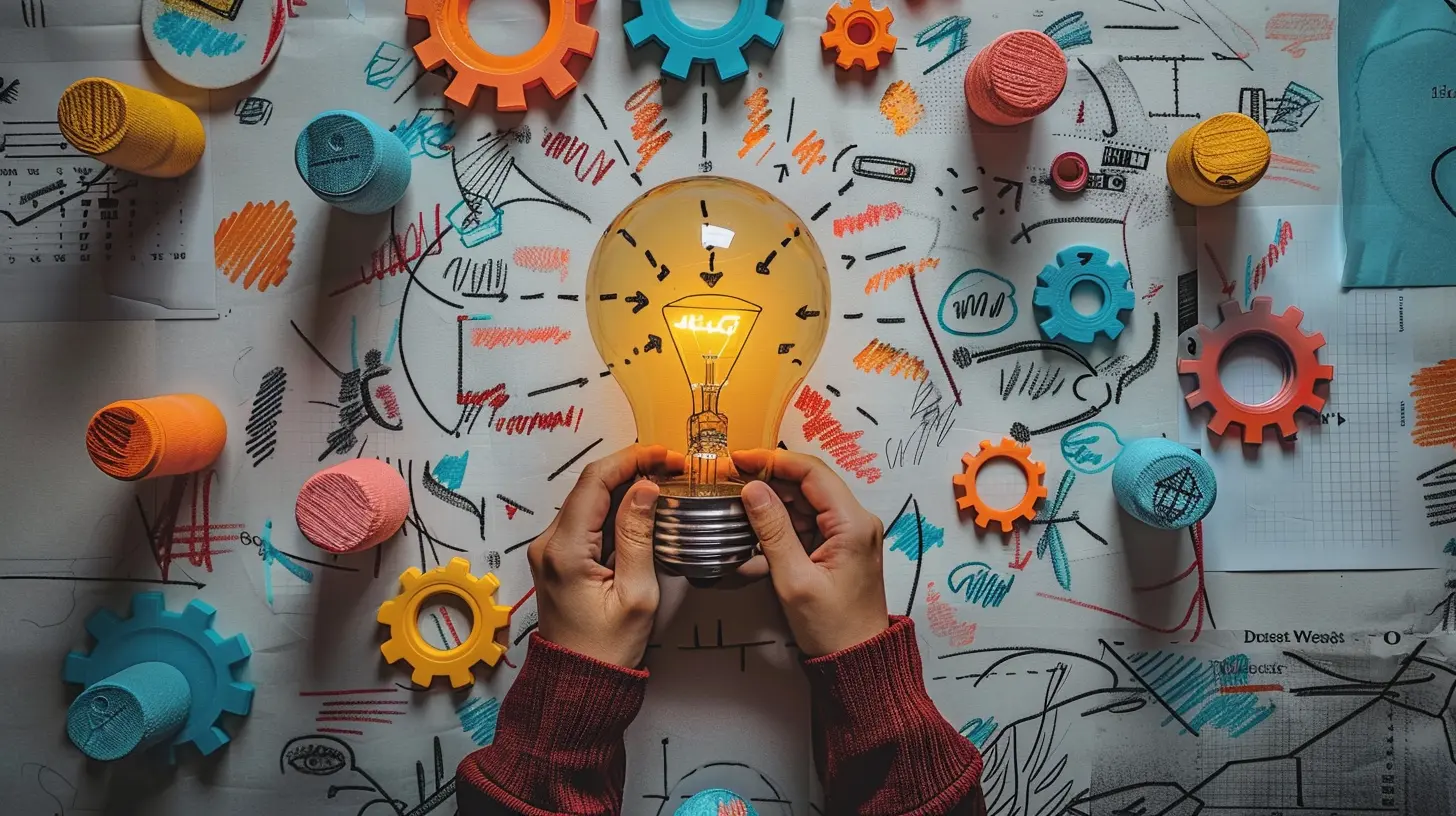The Role of Concept Mapping in Test Preparation
11 August 2025
Let’s talk about something that might just save your academic life: concept mapping. Not the most glamorous-sounding term, I know. But hear me out — this simple, visual tool can seriously transform the way you prep for exams. Whether you’re a student buried under a pile of textbooks or a lifelong learner trying to get through that tricky certification, concept maps can be your secret weapon.
So, grab a coffee, take a deep breath, and let’s dive into how these colorful webs of information can make a world of difference in your study game.
What Is Concept Mapping (And Why Should You Care)?
Concept mapping is a visual way of organizing and representing knowledge. Think of it like creating a roadmap for your brain. Instead of just listing facts or making endless flashcards, you're connecting ideas — literally drawing lines between concepts to show how they're related.Picture a spider web sprinkled with thoughts, each one linked to another. That’s a basic concept map. It’s logical, it's creative, and it's way more engaging than just reading your notes over and over again (been there, done that, fell asleep).
Why Traditional Studying Doesn't Always Work 🤷♀️
Let’s be real. We've all done the “study” thing where we read a chapter five times, highlight every other sentence, and then blank out during the test. You’re not alone.Traditional study methods are often passive — you're just taking in info without really interacting with it. Your brain’s basically flipping through a slideshow on autopilot. But with concept maps? You’re in the driver’s seat. You’re building, analyzing, connecting.
That active involvement boosts memory retention and pushes your comprehension to a whole new level.
Breaking It Down: How Concept Maps Help in Test Prep
Alright, now let’s get into the good stuff. Here’s how concept mapping can actually help you prepare for your next big test.1. See the Big Picture (Without Getting Lost)
Ever felt like you’re drowning in details? Like the more you study, the more disconnected everything becomes? Concept maps help reel it all back in.By laying out key concepts and major themes, you create a visual “zoomed-out view” of the topic. It’s like switching from street view to bird’s eye view in Google Maps. You suddenly see how the little side streets connect to the main road.
2. Reinforce Relationships Between Concepts
Let’s say you’re studying biology — lots of terms, tons of processes. Instead of memorizing them separately, a concept map helps you link photosynthesis to cellular respiration to ATP production... and suddenly, it all starts to click.Your brain loves patterns. When you show it how ideas are related, it creates stronger memory links. And that’s gold when you’re staring down a tough multiple-choice question.
3. Identify Gaps in Your Understanding
Here’s a fun trick: try making a concept map before you study. Seriously. No peeking. You’ll see exactly where you're solid and where your knowledge has holes big enough to drive a bus through.This gives you a clear study roadmap. Focus only on what you actually need to learn, instead of wasting time reviewing stuff you already know.
4. Boosts Creativity and Critical Thinking
Concept mapping isn’t just about “studying.” It's thinking, connecting, analyzing. The process itself puts your brain into a higher gear.You’re not just memorizing what mitochondria do — you’re connecting them to their roles in energy, movement, growth. You start asking questions and drawing conclusions. And honestly? That’s where real learning happens.
5. Easy to Review (Way Better Than Reading a Wall of Text)
Ever tried cramming with a 40-page study guide? Not fun. Concept maps give you a quick, visual summary you can review in minutes.Think of it as a cheat sheet — but a totally legit one you made yourself. It’s color-coded, clear, and made to match how you think. Way more effective than re-reading that thick textbook... again.
How to Create a Concept Map Like a Pro
Okay, so now you’re convinced. But how do you actually make one?Don’t worry — you don’t need fancy software or artistic talent. Here’s a step-by-step breakdown:
Step 1: Start With a Central Idea
Write the main topic in the center of your paper. Big, bold, and obvious. Let’s say it’s “Photosynthesis.” That’s your hub.Step 2: Branch Out to Main Subtopics
From that central idea, draw lines to the key concepts related to it — like “Light Reactions” and “Calvin Cycle.” These are your big branches.Step 3: Add Supporting Details
Now go deeper. What happens during light reactions? Where does ATP come in? What’s the role of chlorophyll? Add smaller branches under each subtopic.Step 4: Connect Related Ideas
Here’s the fun part — draw connections across different parts of your map. Show how one concept leads to another. Use arrows, lines, colors — anything that helps you visualize.Step 5: Review and Revise
Look at your map. Anything missing? Something that doesn’t make sense? Add, erase, re-link. It’s a living document, not a Mona Lisa.Digital Tools vs. Old-School Paper
Ah, the age-old question: Should you go digital or stick with pen and paper?Both have their perks. Here’s a breakdown:
| Method | Pros | Cons |
|----------------|------------------------------------------|---------------------------------------|
| Paper | Easy, tactile, no distractions | Hard to edit, not always portable |
| Digital | Easy to edit, share, and store | Can be distracting, learning curve |
Some great digital mapping tools include:
- Coggle
- MindMeister
- XMind
- Lucidchart
Try both. See what sticks. There’s no one-size-fits-all — just what works best for your brain.
Concept Mapping for Different Subjects
This isn’t just for science folks. You can use concept maps in pretty much any subject. Let’s break it down:📚 Literature
Map out character relationships, themes, and plot structures. Perfect when you’re prepping for that essay on Shakespeare or symbolism in “The Great Gatsby.”⚗️ Science
Create flowcharts of biological processes, physics systems, or chemical reactions. It brings dry facts to life.📊 Business/Marketing
Link concepts like branding, segmentation, and customer decision-making. Great for visualizing strategy.🧠 Psychology
Show how theories connect — think Maslow’s hierarchy, classical conditioning, etc. It's a great way to study models and frameworks.🌎 History
Map causes and effects of events, historical timelines, and key players. Less memorization, more understanding.Group Study Hack: Make It a Team Effort
Studying with friends? Try building a concept map as a group. Each person adds what they know — and explains it. Not only does it diversify your input, but teaching others also reinforces your learning.Plus, it's way more fun than sitting in silence with everyone pretending not to be on their phones.
Bonus Benefits You Didn’t Expect
Yep, the perks don’t stop at better grades. Using concept maps can:- Reduce study stress (you’re organized and focused)
- Sharpen your communication skills (you learn how to explain complex stuff simply)
- Improve your writing (especially for essays, since you already know how everything connects)
It’s like upgrading your study toolkit — and who doesn’t want better tools?
Common Mistakes to Avoid
Before you go and map your heart out, here are a few rookie mistakes to dodge:- Overloading with info: Keep it clean. Too much text defeats the purpose.
- Making random connections: Every link should make sense. Don’t connect just to connect.
- Ignoring layout: Use colors, spacing, and arrows intentionally.
- Making it once and forgetting it: Revisit and refine your maps. They should evolve as your understanding grows.
So… Should You Try It?
Honestly? Yes. Whether you're prepping for finals, studying for the LSAT, or brushing up on your high school chemistry (hey, no judgment), concept mapping can be a total game-changer.It’s simple, effective, and kind of fun once you get into the groove. You’re turning your messy thoughts into a clear, visual masterpiece — and that’s pretty powerful.
So next time your test is around the corner, instead of panic-studying 48 hours straight… build a map. You might just find yourself walking into that exam with way more confidence (and far less caffeine).
Final Thoughts
Concept mapping isn’t just a visual exercise. It’s a mindset — a way of thinking that helps you connect the dots instead of just collecting them. And in the craziness of academic life, that clarity is worth its weight in gold.So go ahead: grab a notebook, open that mind mapping app, and start connecting. Your brain will thank you — and so will your GPA.
all images in this post were generated using AI tools
Category:
Test PreparationAuthor:

Olivia Lewis
Discussion
rate this article
1 comments
Elwynn Young
Concept mapping is a powerful tool for test preparation, as it helps students visually organize information, enhancing understanding and retention while simplifying complex concepts for better recall.
August 27, 2025 at 8:15 PM

Olivia Lewis
Thank you for your insightful comment! I completely agree—concept mapping indeed simplifies complex information and boosts retention, making it an invaluable tool for effective test preparation.


